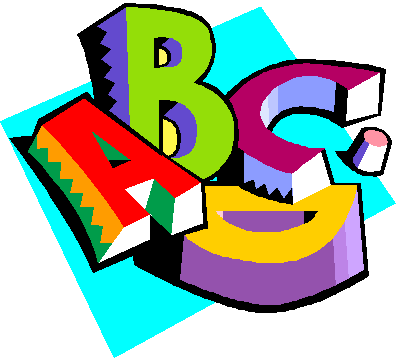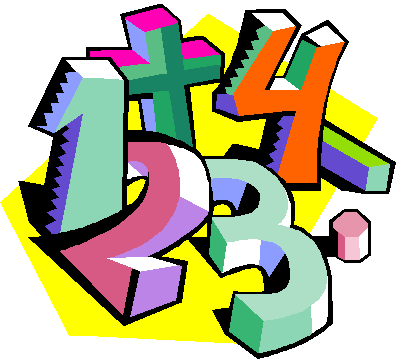


QueSPER Information Literacy Curriculum
Scope and Sequence



|
Concepts & Definitions |
GrK | Gr1 | Gr2 | Gr3 | Gr4 | Gr5 |
|
Learning about information |
||||||
|
Kinds of information (live and recorded) Information comes through the senses Information is found by matching |
I, F
I, F
I, F |
F
F
F |
R
R
F |
R
R
F |
R
R
R |
R
R
R |
|
Learning to learn |
||||||
|
Recognize patterns Note details (measure) Compare |
I,F |
I,F |
I,F |
F |
R |
R |
|
Plan Process Purpose, Goal, Assessment Models Steps and Strategies Reflections and Revisions |
I |
I |
I |
I, F |
F |
F |
Learning Process Question and Investigate Use senses Compare, Measure, Match |
I |
I, F |
I, F |
F |
F |
F |
|
Categorize
Classify, Name General / Specific Broad / Narrow Between |
I |
I |
I, F |
I, F |
F |
F |
|
Describe Actual, Metaphoric |
I, F |
F |
F |
F |
F |
|
|
Learning from others |
I |
I |
F |
F |
F |
R |
|
Question Who, What, When, Where, Why How, What if? |
I |
F |
F |
R |
R |
|
|
Search Strategies and plan
Pre-search First SearchKnowledge Search |
I |
I |
F |
F |
F |
|
|
Conclude, Decide Choose BASED UPON CRITERIA |
I |
I |
I |
I |
I, F |
F |
|
Creating Products |
||||||
|
Produce |
I |
F |
F |
F |
F |
|
|
Note taking |
I |
I |
F |
F |
F |
|
|
Organizing (Sorting and selecting) |
I, F |
I, F |
I, F |
F |
F |
F |
|
Synthesizing |
I |
I, F |
F |
F |
||
|
Citing Sources |
I |
I |
I |
I |
I |
F |
|
Evaluating |
||||||
|
Evaluate Information RELEVANTRELIABLE OTHER - |
I |
F |
||||
|
Evaluate Product COMPLETECORRECT COMPREHENSIVE |
I |
I |
I |
I |
F |
F |
|
Reflect (Self-assessment)COMFORTABLE CONFIDENT CAPABLE |
I |
I |
I |
F |
F |
F |
|
Evaluate Process EFFECTIVEEFFICIENT |
I |
F |
F |
F |
||
|
Evaluate Learning MAKES SENSEI HAVE MORE KNOWLEDGE I WANT TO LEARN MORE |
I |
I |
I |
F |
F |
F |
|
Evaluate Independence CURIOUS AND FOCUSEDSOLVES INFORMATIONPROBLEMS USES SKILLS & STRATEGIES KNOWS WHEN TO SEEK ASSISTANCE RESPONSIBLE & RESPECTFUL COLLABORATIVE EVAULATES & REFLECTS |
I. F |
I, F |
I, F |
I, F |
I, F |
I, F |
|
Location Skills |
||||||
|
Ordering systems for information |
I |
I |
I, F |
F |
R |
R |
|
Alphabetical order |
I |
I |
I, F |
R |
R |
R |
|
Numerical order |
I |
I |
I, F |
F |
F |
F |
|
Subject order |
I |
I |
I |
I |
I |
I |
|
Chronological order |
I |
I |
I |
I |
I |
I |
|
Dewey Decimal System |
I |
I |
I, F |
I, F |
F |
F |
|
Range of numbers |
I, F |
I, F |
R |
R |
||
|
Shelf order |
I |
I |
I |
I, F |
I, F |
R |
|
Bookcase order |
I |
I |
I |
I, F |
I, F |
R |
|
Spine & Spine label |
I, F |
I, F |
I, F |
F |
R |
R |
|
Section codes |
I, F |
I, F |
I, F |
I, F |
I, F |
I, F |
|
Call numbers |
I |
I |
I, F |
I, F |
I, F |
I, F, R |
|
Author letters |
I |
I |
I, F |
I, F |
I, F |
I, F, R |
|
Guide words, numbers |
I |
I |
I,F |
R |
R |
R |
|
Access Skills |
||||||
|
Catalog Search Keyword search, Title search, Author search, Subject search, Boolean search |
I |
I, F |
I, F |
I, F |
I, F |
|
|
Catalog Card Parts Call numbers and letters, Author, Title, Publisher, Date, Notes, Subject Headings |
I |
I |
I |
F |
F |
|
|
Bibliography Ordering: Author, Title, Call number Selecting: Lock & Unlock Printing: List & Annotate |
I |
I |
I, F |
I, F |
I, F |
|
|
Search Strategies |
||||||
|
Spelling & Browse |
I |
I |
F |
F |
F |
R |
|
Meaning & Keywords |
I |
I |
F |
F |
F |
F |
|
Indexes & Order |
I |
I |
I, F |
I, F |
I, F |
I, R |
|
People & Last name |
I |
I |
I |
I |
F |
F |
|
Repetition |
I, F |
I, F |
I, F |
I, F |
I, F |
I, F |
|
Asking for assistance |
I, F |
I,F |
I,F |
I,F |
R |
R |
|
Library Procedures |
||||||
|
Names of staff |
I, F |
R |
R |
R |
R |
R |
|
Select |
I, F |
R |
R |
R |
R |
R |
|
Borrow |
I, F |
R |
R |
R |
R |
R |
|
Check-out |
I, F |
R |
R |
R |
R |
R |
|
Return |
I, F |
R |
R |
R |
R |
R |
|
Renew |
I, F |
R |
R |
R |
R |
R |
|
Overdue |
I, F |
R |
R |
R |
R |
R |
|
Resources |
||||||
|
Easy / Picture Books Alphabet books, wordless picture books, number & concept books, picture story books |
I, F |
I, F |
R |
R |
R |
R |
|
Fiction Books By genre - historical, science, humorous, fantasy, realistic, mystery, sports, adventure, animal fiction;literary fairy tale By type - Beginning readers, Early chapter books, Chapter books, Short stories |
I
I, F |
I
I, F |
I
I, F |
I
I, F |
I, F
R |
I, F
R |
|
Folk Literature Mother Goose & other rhymes, & riddles & songs.Folk tale motifs : talking animals, ghosts and the supernatural, magic objects, magic characters, magic places, heroes, transformationsFolk tale characteristics: young hero or heroine, good overcomes evil, songs, chants, repetitions in eventsFOLTALE TYPES: Fables, Fairy tales, Cautionary tales, Hero tales, Talking animal tales, |
I |
I |
I |
I |
I |
I |
|
Other Literature Jokes, riddles, nursery rhymes, poetry, plays, essays |
I |
I |
I |
I |
I |
I |
|
Nonfiction Books By study area - information science, philosophy, religion, social science, language, pure science, technology, fine arts and architecture, literature, history and geography |
I, F |
I, F |
I , F |
F |
F |
R |
|
Biographies Autobiography |
I |
I |
I |
F |
||
|
Reference Books General and Specific |
I |
I |
I, F |
I, F |
I, F |
I, F, R |
|
Dictionaries |
||||||
|
Language dictionary |
I |
I |
F |
F |
R |
R |
| Biographical Dictionary |
I |
I |
I |
|||
| Geographical Dictionary |
I |
I |
||||
|
Encyclopedias |
I |
I |
I |
F |
F |
F |
|
Atlas |
I |
I |
I, F |
F |
F |
F |
|
Almanac |
I |
I, F |
I, F |
F |
||
|
Periodicals |
I |
I |
I |
I |
F |
F |
|
AV and Realia |
I |
I |
I |
|||
|
Online sources |
I |
I |
I |
I |
I |
F |
|
CD resources |
I |
I |
I |
I |
I |
F |
|
Experts & knowledgeable people |
I |
F |
I |
I |
F |
F |
|
Technology |
||||||
|
Keyboarding |
I |
I |
I |
I |
I |
I |
|
Word Processing |
I |
I |
I |
I |
I |
I |
| Computer file management |
I |
I |
I |
|||
|
Database |
I |
I |
F |
|||
|
Production (e.g. Power Point) |
I |
I |
I |
I |
F |
F |
|
Website use & evaluation |
I |
I |
I |
I, F |
F |
F |
Created by Carol J. Fox
For May Watts Elementary School
Ó 2002
| Kinder- garten | First Grade | Second Grade | Third Grade | Fourth | Fifth Grade | |
| Critical Thinking
We learn by:
Questioning Investigating Describing Comparing Matching Sorting Selecting Learning from others: (Reading, Listening, etc.) Analyzing Evaluating Concluding Reporting (Writing, Speaking, etc.) Reflecting |
||||||
| Ethical and Responsible Thinking
Know how to use information resources* ethically: avoid plagiarism take notes create bibliographies paraphrase quote cite sources Know how to use information resources to judge: authority accuracy relevance reliability comprehensiveness bias discrepancy |
||||||
|
Information Retrieval - Concepts
Information is data we take in through our senses.hearing tasting smelling touching seeing Two kinds of information: live and recorded Live information is all happening at once, never the same twice. Unorganized. Recorded information is the same every time you use it. Organized for use over and over. Recorded Information can be organized into categories
Information Philosophy Religion Social Science Language Pure Science Technology Fine Arts Literature History Geography Biography
Books Tapes Digital formats
Alphabet and alphabetical order Numerical and numerical order Topical or Subject and subject order Date and Time order Finding information means you must understand and use concepts such as:
|
||||||
| Ordering & Indexing
Alphabetical order Numerical order Subject order Time order |
||||||
| How to Read Shelves
Sections Easy Primary Nonfiction Primary Fiction Fiction Nonfiction Color Codes Alphabetical Order Numerical Order Physical shelf arrangements (the Z shape) |
||||||
| Book Parts
Cover Spine Title page Illustrations Author Illustrator Publisher Copyright Date & Symbol |
||||||
| SEARCHING
with keyword with title with subject |